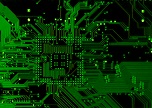
Electronic Design Projects: Embedded Systems
Defining an embedded system precisely is not straightforward. Looking around, we can see that we are surrounded by electronic systems in some form. Generally, all electronic systems, except for general-purpose computers (those with a screen and keyboard), are referred to as embedded systems.
A system is the organized operation of one or more tasks within a set of rules, plan, or program. In other words, it is the operation of all units coming together and functioning according to a proper plan or program. The term "embedded system" corresponds to embedding software capable of performing a specific task onto hardware that is designed for a specific application or as part of a larger application or product.
Basic Characteristics
- a) Embedded systems are application-specific and have singular functions; the application is known beforehand, and steps are executed in a repetitive manner.
- b) Efficiency is crucial for embedded systems. Energy, code size, processing times, weight & size, and cost must be optimized.
- c) Embedded systems are typically designed to meet real-time requirements, being triggered by a device or operator at any time within their environment. They must respond quickly enough to all triggers. Late responses (or responses that are too early) are considered errors.
- d) Embedded systems often interact with their surrounding environment through sensors or actuators, making them interactive systems. The key requirement for continuous interaction is the ability to keep pace with the interaction speed imposed by the environment.
- e) They lack interfaces. If present, the interfaces will be very limited.